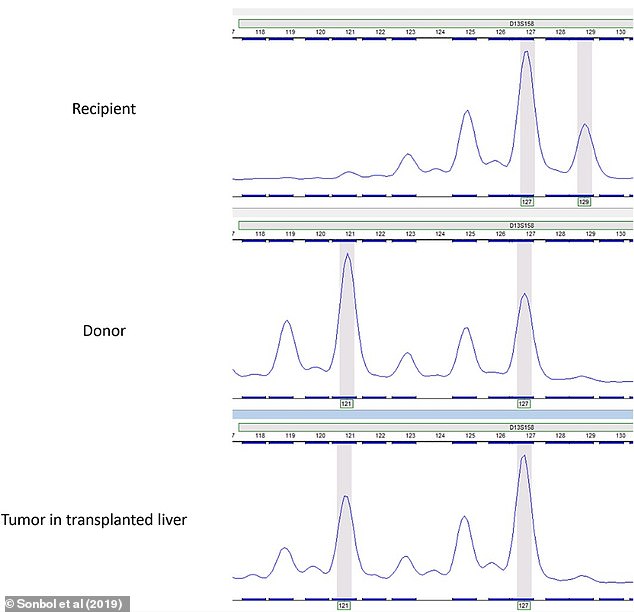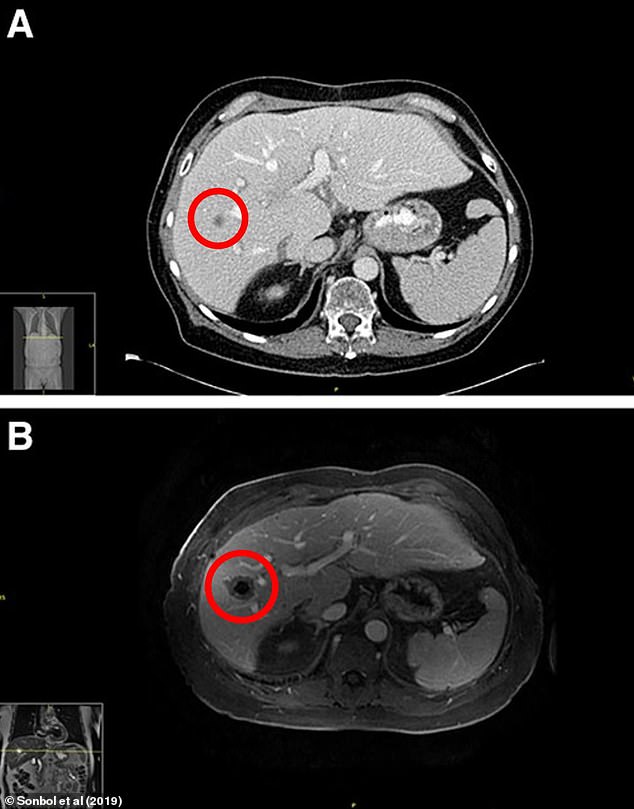In a cruel twist of fate, a man undergoing an organ transplant to treat his liver cancer ended up contracting a different form of the disease and dying.
The unnamed patient, 69, from Arizona, had cirrhosis and received a liver transplant from a deceased donor in 2019.
The transplant surgery was successful, however, months later the man developed an aggressive and advanced form of cancer.
Additional testing of cells removed from the biopsy revealed that the cancer was “clearly different” from the disease the man had before undergoing the liver transplant.
Based on a series of laboratory results, doctors determined that the new liver cancer “originated in the donor.” And although the man was eventually diagnosed with lung cancer, the tumors were unexpectedly limited only to his new liver.
Cases of “transplanted” cancer are extremely rare and there are no statistics on the matter: only a few sporadic cases have been documented in the medical literature.
The doctors in the case report wrote: “To our knowledge, this is the only case in the literature describing donor-derived lung cancer in a liver graft without known malignancy in the donor.”
A patient with cirrhosis and liver cancer underwent a liver transplant and received an organ from a deceased donor (file photo)
The patient initially needed a liver transplant because he developed alcoholic cirrhosis (liver disease that causes scarring of the organ due to excessive alcohol consumption) and hepatocellular carcinoma (HCC), a type of liver cancer.
But body scans showed no signs of cancer anywhere else in the body, doctors say. wrote in the patient’s case report published in The Oncologist and shared at the NIH National Library of Medicine.
While his medical team originally attempted minimally invasive procedures to cure the cancer, the man developed worsening liver function and a transplant was deemed necessary.
Six months after his initial diagnosis, he underwent a liver transplant at the Mayo Clinic in Phoenix, Arizona.
Four months later, a routine ultrasound revealed two solid masses in his liver. While the masses had not been seen on previous scans, doctors still considered them “indeterminate.”
The patient then underwent a CT scan, which revealed three new masses.
Six weeks later, an MRI showed “countless liver masses.”
Biopsies confirmed “poorly differentiated carcinoma,” suggesting an aggressive, advanced form of metastatic lung cancer.
The doctors wrote: ‘The… characteristics of the tumor were clearly different from those of previous HCC. These findings were suspicious of donor-transmitted malignancy.
“A polymerase chain reaction (PCR)-based assay strongly suggested that the newly diagnosed metastatic carcinoma in the liver originated from the donor.”

The above tables show that the genetic composition of the tumor in the man’s transplanted liver is the same as that of the donor.
This suggests that the organ donor had undiagnosed advanced lung cancer that had spread to the liver.
The deceased donor, a 50-year-old male, had a history of smoking, but no history of lung tumors or cancer.
Additionally, pre-donation testing did not uncover any tumors, and examinations of the donor’s lungs uncovered no cause for concern.
Due to the spread of his cancer, the patient was not eligible to receive another liver transplant and his anti-rejection medications, prescribed so that his body would not reject his new liver, had to be reduced.
The man received chemotherapy drugs and the cancer appeared to stabilize, but a subsequent scan revealed it had progressed beyond treatment. He died approximately six months after his transplant.
The doctors wrote: “Progression of (liver) metastases and reduction of immunosuppressive agents led to liver failure and death of the patient.”
The case report indicated that donor-derived lung cancer in the liver had only been reported one other time in a 41-year-old man whose donor was found to have lung cancer several days after transplant.
But this is the first known case of cancer derived from a donor with no known cancers.

The images above show a CT scan of the liver tumor (top, circled) and an MRI of the liver tumor (bottom, circled)
“Transplanted” cancer cases are extremely rare.
A 2013 review of these cases published in Cold Spring Harbor Perspectives in Medicine states that there is no estimate of the risk of cancer transmission from donor to recipient and that there is limited data on the subject.
The report’s authors wrote: “The incidence of any cancer transmission is so low that reports of sporadic cases are the main source of information.”
A previous review A 1993 study that analyzed data from the 1970s also found that there were only “sporadic” reports of cancer transmitted through organ donation.
The 2013 review added: “The low frequency and highly variable stage of cancers mean that definitive risk calculations are impossible.”
However, the authors continued, it is “very likely that the data underestimate the true incidence.”
Using the limited data available, the authors of the 2013 report found that cancers known to have been transmitted from donor to recipient on at least one occasion include breast cancer, colon cancer, liver cancer, lung cancer, melanoma , ovarian cancer, prostate cancer and kidney cancer. cancer.


